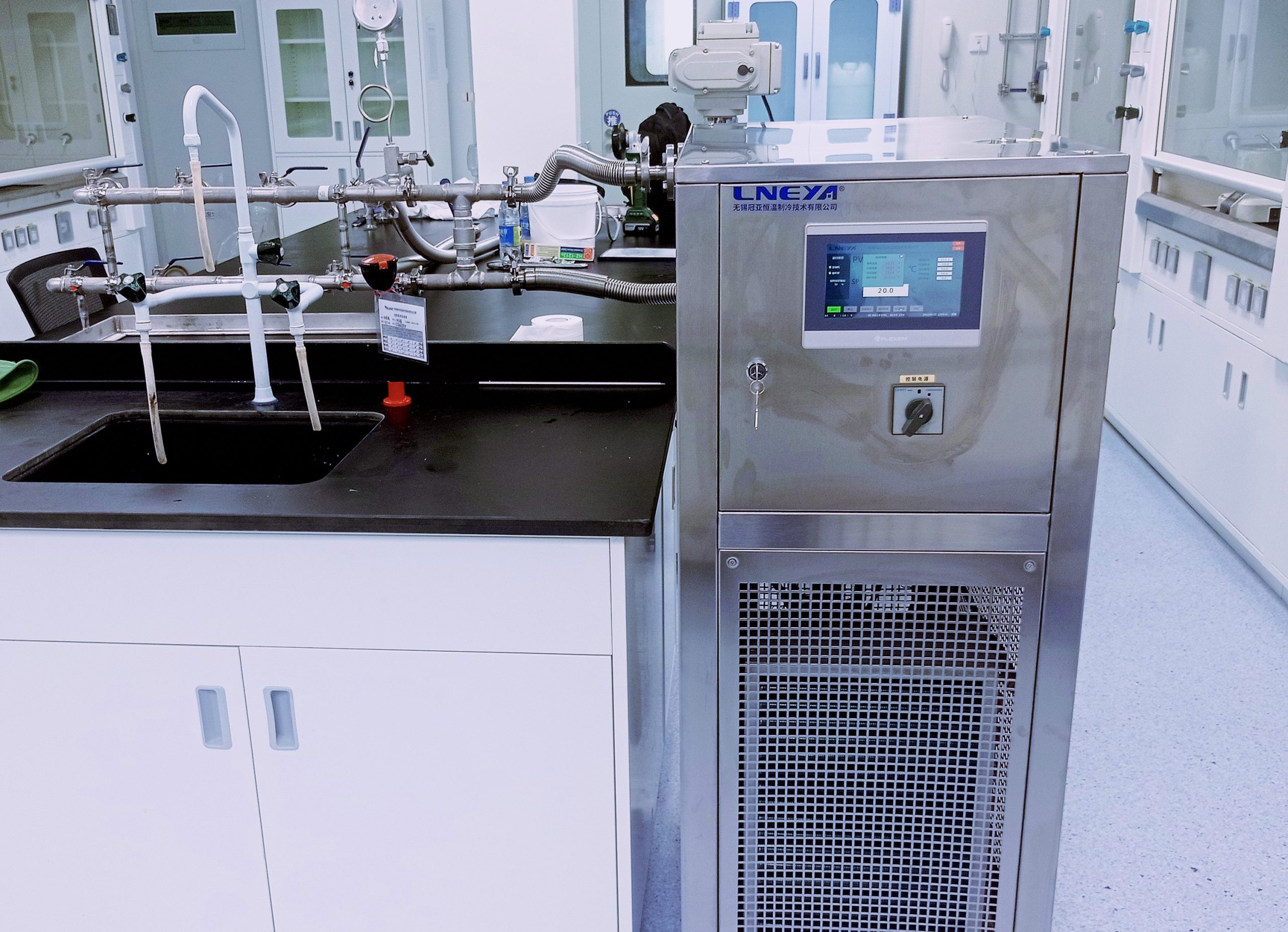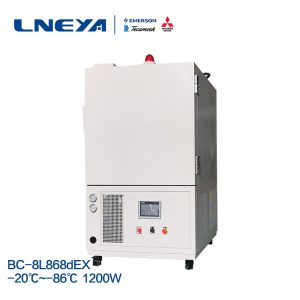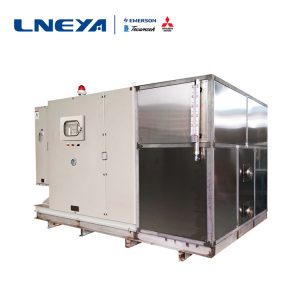Existem normalmente três formas de controlar a temperatura dos reactores de laboratório

1. Manual control: Manually operate the knob on the front of the reactor controller.
2. Control by PC: The PC and the controller are connected by a network cable, and the operation is carried out on the PC.
3. Controlled by thermostat: Silicone oil is heated through the thermostat, and the thermostat naturally has a temperature control function. Although the thermostat heating limit (usually 250°C) is not as high as that of electric heating (can be as high as 400-500°C), the thermostat rises and falls smoothly, and the low temperature can reach -60/-80°C.
Our LNEYA laboratory reactor temperature control system belongs to the third category. However, the temperature control range is from -120 degrees to 350 degrees. It adopts a fully enclosed pipeline design and a high-efficiency plate heat exchanger, which reduces the demand for heat transfer oil, improves the heat utilization rate of the system, and realizes rapid temperature rise and fall. Continuous temperature control can be achieved in the temperature range of minus 90 degrees to 195 degrees and minus 70 degrees to 220 degrees without pressure.
Jacketed glass reactors are popular in current chemical experiments. The supporting temperature control equipment has also become a matter of widespread concern in the industry. It is known that the cooling and heating temperature in the reaction process has an absolute influence on the reaction process and results. The analysis of the temperature control equipment’s ability to increase and decrease the temperature of the material has become the basic basis for choosing chiller. Then the cooling and heating capacity is not only estimated by imagination and experience, but requires scientific analysis and calculation methods, and needs to calculate the required heating power and cooling power according to the heating rate and cooling rate.
When our technicians communicate with customers, they will first understand the requirements of engineering parameters, such as high and low temperature, how long is the temperature control time, etc., so as to calculate the cooling power and heating power of the chiller required, and determine the available chiller. model, to give customers the most complete temperature control solution. If you also have this need, you can contact us.
Recomendações relacionadas
-
Seleção e manutenção de um refrigerador de temperatura ultra baixa
1392Today, a customer came to inquire about our need for a small laboratory water chiller. The specific working condition is to reduce the materials in the 20L stainless steel reactor from normal temperature to minus 30 ℃ in more than one hour. This p...
Ver detalhes -
Low temperature freezer (explosion proof) product application instructions
1253LNEYA low temperature freezer (explosion proof) is mainly used for low temperature storage in chemical explosion areas. The equipment adopts microcomputer control, multiple safety protection and more reliable operation; single compressor automatic...
Ver detalhes -
How to deal with organic waste gas treatment refrigerant leakage?
1804In the process of organic waste gas treatment, if it is found that the refrigerant leaks, it is recommended to treat it in time. LNEYA organic waste gas treatment professional manufacturer then analyzes the knowledge of organic waste gas treatment...
Ver detalhes -
Precauções para utilizar o sistema de controlo da temperatura de ensaio de bolachas
1464Precauções para utilizar o sistema de controlo da temperatura de ensaio de bolachas
Ver detalhes
 LNEYA Refrigeradores industriais Fabricante Fornecedor
LNEYA Refrigeradores industriais Fabricante Fornecedor












